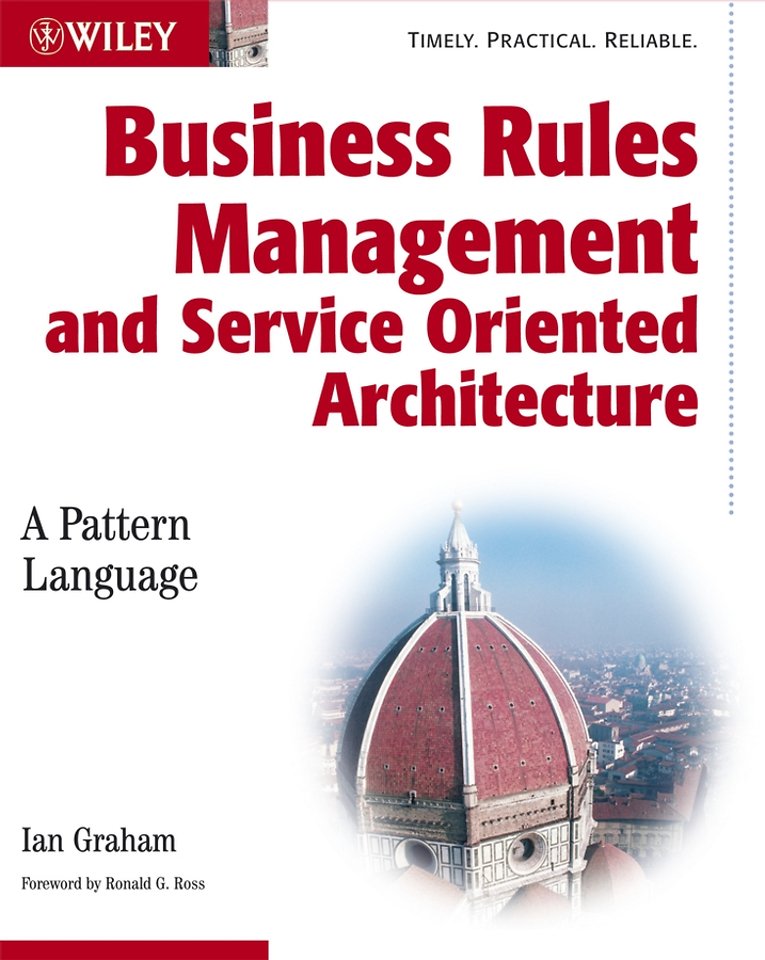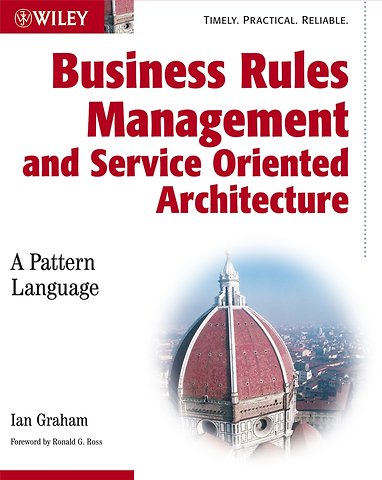


Ian Graham is an industry consultant with over 20 years. He is recognized internationally as an authority on business modelling, object-oriented software development methods and expert systems.
Meer over Ian GrahamBusiness Rules Management and Service Oriented Architecture: A Pattern Language
Samenvatting
Business rules management system (BRMS) is a software tools that work alongside enterprise IT applications. It enables enterprises to automate decision-making processes typically consisting of separate business rules authoring and rules execution applications.
This proposed title brings together the following key ideas in modern enterprise system development best practice.
The need for service-oriented architecture (SOA).
How the former depends on component-based development (CBD).
Database-centred approaches to business rules (inc. GUIDES).
Knowledge-based approaches to business rules.
Using patterns to design and develop business rules management systems
Specificaties
Inhoudsopgave
Preface
1. Aligning IT with Business
1.1. Historical Background
1.2. What are Business Rules?
1.3. What is Business Rules Management?
1.4. Why use a Business Rules Management System?
1.5. The Benefits
1.6. Summary
1.7. Bibliographical Notes
2. Service Oriented Architecture and Software Components
2.1. Service Oriented Architecture and Business Rules
2.1.1. Business Drivers, Benefits and Pitfalls
2.2. Service Implementation using Components
2.3. Agents and Rules
2.3.1. Agent Architecture
2.3.2. Applications of Agents
2.4. Service Oriented Architecture andWeb Services
2.5. Adoption Strategies
2.5.1. After SOA
2.6. Summary
2.7. Bibliographical Notes
3. Approaches to Business Rules
3.1. Database-centric Approache
3.2. GUIDE and the Business Rules Group
3.3. Using UML and OCL to Express Rules
3.4. Business Rules Management Systems and Expert Systems
3.5. Other Developments
3.6. Standards, Directions and Trends
3.7. Summary
3.8. Bibliographical Notes
4. Business Rules Management Technology and Terminology
4.1. Rules and Other Forms of Knowledge Representation
4.1.1. Rules and Production Systems
4.2. Knowledge and Inference
4.2.1. Semantic Networks
4.3. Inference in Business Rules Management Systems
4.3.1. Forward, Backward and Mixed Chaining Strategies
4.4. Data Mining and Rule Induction
4.5. Techniques for Representing Rules
4.5.1. Decision Trees and decision tables
4.6. Uncertainty Management
4.7. Ontology and Epistemology: the Rˆole of Object Modelling in Natural Language Processing
4.8. Summary
4.9. Bibliographical Notes
5. Features of Business Rules Management Systems
5.1. The Components and Technical Features of a BRMS
5.1.1. Rules
5.1.2. Rule Templates
5.1.3. Rule Syntax Checking
5.1.4. Procedures and Algorithms
5.1.5. Ruleflows
5.1.6. Decision Tables and Decision Trees
5.1.7. Inference
5.1.8. Uncertainty and Explanation
5.2. BRMS Products
5.2.1. Blaze Advisor
5.2.2. HaleyRules and HaleyAuthority
5.2.3. JRules
5.2.4. PegaRULES and Versata
5.3. A Simple Application
5.3.1. The Application in Blaze Advisor
5.3.2. The Application in HaleyAuthority
5.3.3. The Application in JRules
5.4. Usability Issues
5.5. Summary
5.6. Bibliographical Notes
6. Development Methods
6.1. Knowledge Acquisition and Analysis
6.2. System Development
6.3. Halle's Guidelines
6.4. Rule Style Guidance
6.5. Summary
6.6. Bibliographical Notes
7. A Pattern Language for BRMS Development
7.1. What are Patterns?
7.2. Why a Pattern Language?
7.3. The RulePatterns Language – Part I
7.3.1. Patterns for Requirements, Process and Architecture
7.3.2. Patterns for Finding, Writing and Organizing Business Rules
7.4. The RulePatterns Language – Part II
7.4.1. Patterns for Knowledge Elicitation
7.4.2. Patterns for Product Selection and Application Development
7.5. Related Patterns and Pattern Languages
7.5.1. Arsanjani's Rule Object Patterns
7.5.2. KADS Patterns
7.5.3. Organizational Patterns
APPENDICES
A: The Business Rules Manifesto
B: A Simple Method for Evaluating BRMS Products
References and Bibliography
Index.
Anderen die dit boek kochten, kochten ook
Net verschenen
Rubrieken
- aanbestedingsrecht
- aansprakelijkheids- en verzekeringsrecht
- accountancy
- algemeen juridisch
- arbeidsrecht
- bank- en effectenrecht
- bestuursrecht
- bouwrecht
- burgerlijk recht en procesrecht
- europees-internationaal recht
- fiscaal recht
- gezondheidsrecht
- insolventierecht
- intellectuele eigendom en ict-recht
- management
- mens en maatschappij
- milieu- en omgevingsrecht
- notarieel recht
- ondernemingsrecht
- pensioenrecht
- personen- en familierecht
- sociale zekerheidsrecht
- staatsrecht
- strafrecht en criminologie
- vastgoed- en huurrecht
- vreemdelingenrecht





